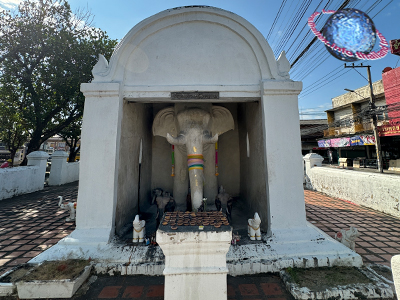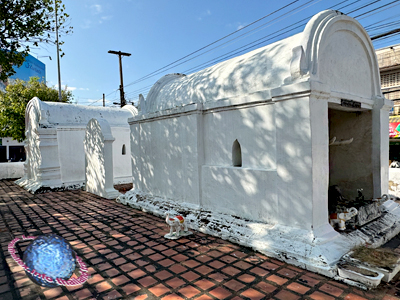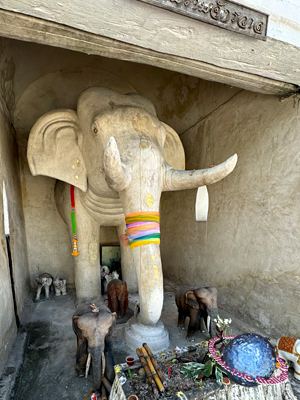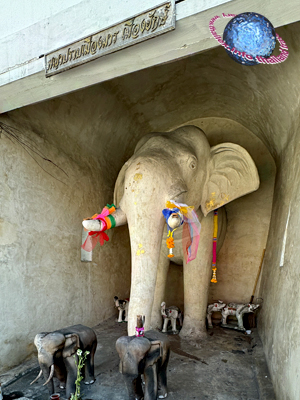|
|
|
|
In gratitude, the king rewarded them with the titles
Khun
Chang Sai and
Khun
Chang Khwa,
meaning
‘Nobleman
of the Left Elephant’
and
‘Nobleman
of the
Right Elephant’,
respectively, and they were symbolized
by statues of
White Elephants
which were placed on either side of the
northern city gate.
|
|
 |
|
White Elephants Monument |
|
 |
|
White Elephants Monument |
|
|
This
construction led to the renaming of the northern moat gate from Pratu Hua Wiang,
i.e. ‘Gate
at the Head of the Walled City’, to its current name, Pratu
Chang Pheuak, which translates to ‘Gate
of the
White Elephant(s)’. |
|
In the early
Rattanakosin
Period,
Chao Kawila
(fig.),
enhanced the monument by erecting new,
almost
life-sized elephant statues,
each placed in an arched pavilion.
The
elephant facing north stands 2.40 meters tall and was
named
Phaya
Prahb
Chakrawahn or ‘Ruler
that Conquers the Cosmos’, i.e. the planes and realms in
which all beings can be reborn, consisting of both
vertical and horizontal cosmologies.
|
|
 |
|
White Elephants Monument |
|
 |
|
White Elephants Monument |
|
|
Whilst the
elephant facing west has a height of 2.48 meters and was
named
Phaya
Prahb
Meuang
Maan Meuang
Yak, i.e.
‘Ruler
that Conquers the Land of
Mara and the Land of Giants’. The
names of the elephants are indicated by plaques over the
niches of their respective pavilions. In 1996, the
monument was restored for the occasion of the
celebrations of the 700th anniversary of Chiang Mai
City.



 |





|
|